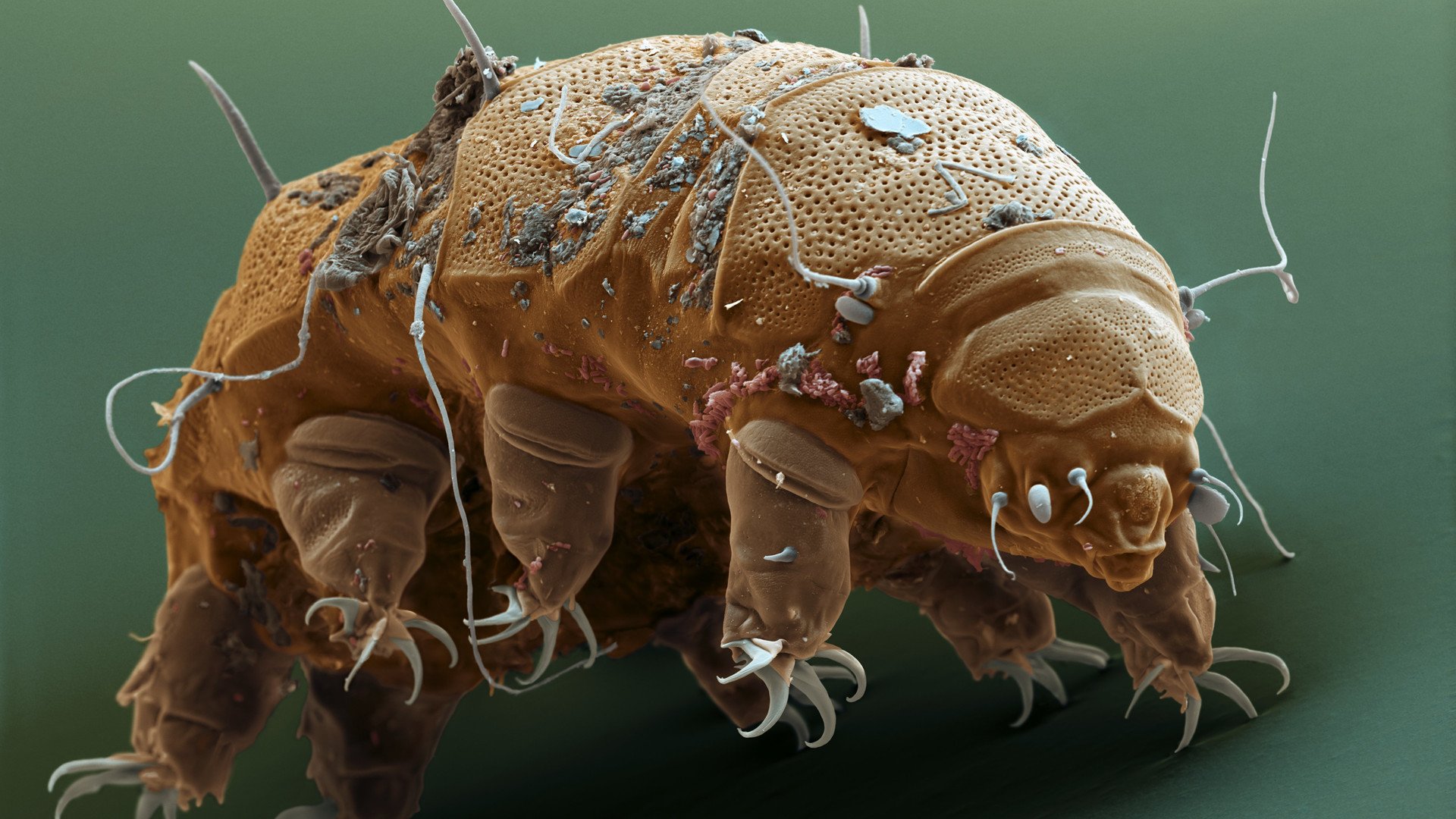Special protein
Scientists recently made another discovery on how these microbes are so resilient. Earlier research had already shown how tardigrades, when dehydrated, can go into a kind of hibernation to protect themselves. Now, scientists have discovered that these tiny creatures can protect themselves from radiation as well, by making a 'shield' from a certain protein.
The protein Dsup (damage suppressor) is unique to the tardigrade, and is encoded by a single gene. It is not yet clear how the protein works exactly, but researchers from the University of California have a suspicion. They discovered that the protein consists of two parts. One part binds the DNA to the cell nucleus, and the other part forms a cloudy structure around the DNA, protecting it from radiation. DNA contains all the genetic information of an organism, and must be protected at all costs. Tardigrades may encounter radiation when their moist, mossy environment dries up. If they do, they will enter their state of dehydrated cryptobiosis to protect themselves. Through this new discovery, we now know that Dsup protects the tardigrade in this phase like a kind of radiation shield.
In the future, this protein could be used to protect human cells from radiation, as it has the potential to reduce radiation damage in human cells by up to 40%. These biotechnological innovations will, however, take some time. It will be a while before we see superhumans walking around with tardigrade characteristics.

